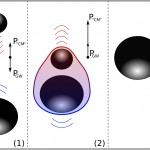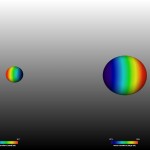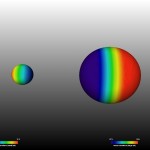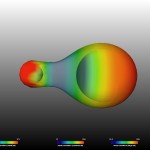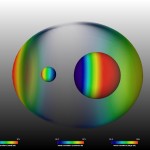Colliding Black Holes
Kick and Antikick in the head-on collision of two black holes
In this simulation, a smaller and a large black hole move linearly towards each other and collide head-on. The smaller black hole moves faster, has a high downward momentum and emits strong gravitational waves downwards. Since every action also produces a reaction, the overall system moves upwards – this is the “kick” (left part of Fig. 1). The black hole produced by the merger initially is not spherical, but is deformed and has a type of “bump” at the top (central part of Fig. 1). To smooth this asymmetry and achieve the energetically more favourable spherical shape, more momentum is radiated upwards by means of gravitational waves: this “anti-kick” therefore decelerates the resulting black hole. It still moves upwards, albeit at a reduced speed (right part of Fig. 1). Numerical simulation: P. Moesta, L. Rezzolla (Albert Einstein Institute) Scientific visualization: M. Koppitz (Albert Einstein Institute & Zuse Institute Berlin)

